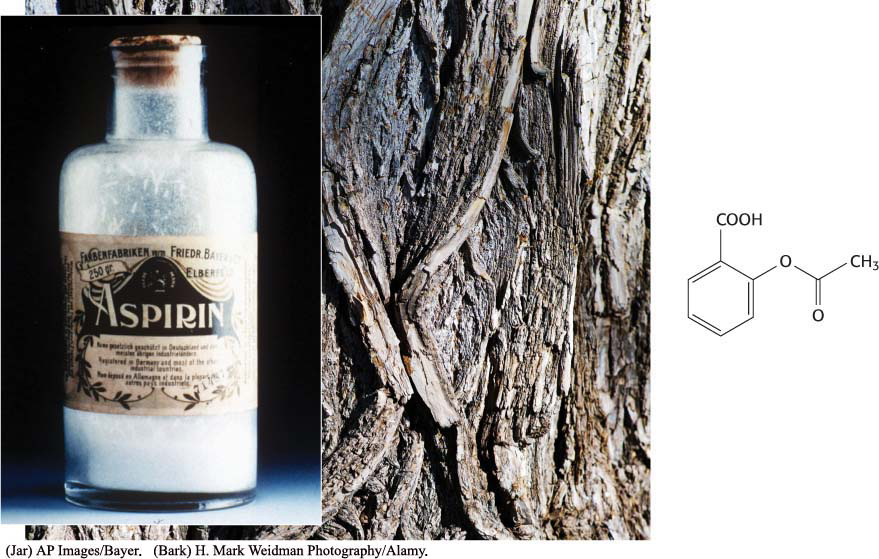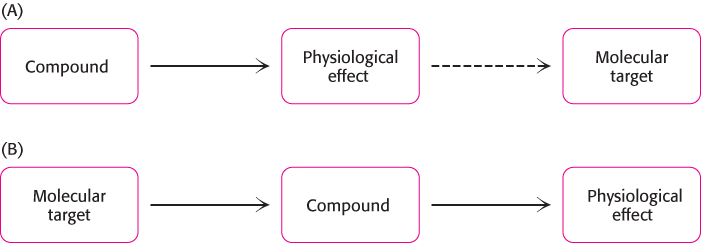
Many drugs are based on natural products. Aspirin (right) is a molecule related to a compound isolated from willow bark (middle). Extracts of willow bark had long been known to have medicinal properties. The active compound was isolated, modified, and, beginning in 1899, packaged for consumers (left).
The development of drugs is among the most important interfaces between biochemistry and medicine. Throughout the previous chapters in this book, we have encountered a number of types of proteins—enzymes, receptors, and transporters—that serve as targets for a majority of the drugs in clinical use (Figure 36.1). In most cases, drugs act by binding to these proteins and inhibiting or otherwise modulating their activities. Thus, knowledge of these molecules and the pathways in which they participate is crucial to drug development. An effective drug is much more than a potent modulator of its target, however. Drugs must be readily administered to patients, preferably as small tablets taken orally, and must survive within the body long enough to reach their targets. Furthermore, to prevent unwanted physiological effects, drugs must not modulate the properties of biomolecules other than the intended targets. These requirements tremendously limit the number of compounds that have the potential to be clinically useful drugs.

FIGURE 36.1The targets of drugs in current use. In this pie chart, currently-used drugs that modulate human proteins are sorted by target type: enzymes in green, receptors in blue, transporters in red, and other targets in gray.
[Data from M. Rask-Andersen et al., Nat. Rev. Drug Discov. 10:579–590, 2011]
Drugs have been discovered by two fundamentally distinct approaches (Figure 36.2). The first approach identifies a substance that has a desirable physiological consequence when administered to a human being, to an appropriate animal, or to cells. Such substances can be discovered by serendipity, by the fractionation of plants or other materials known to have medicinal properties, or by screening natural products or other “libraries” of compounds. In this approach, a biological effect is known before the molecular target is identified. The mode of action of the substance is only later identified after substantial additional work. The second approach begins with a known molecular target. Compounds are sought, either by screening or by designing molecules with desired properties, that bind to the target molecule and modulate its properties. After such compounds are available, scientists can explore their effects on appropriate cells or organisms. Many unexpected results may be encountered in this process as the complexity of biological systems reveals itself.

FIGURE 36.2Two paths to drug discovery. (A) A compound is discovered to have a desirable physiological effect. The molecular target can be identified in a separate step as needed. (B) A molecular target is selected first. Drug candidates that bind to the target are identified and then examined for their physiological effects.
Pharmacology
The science that deals with the discovery, chemistry, composition, identification, biological and physiological effects, uses, and manufacture of drugs.
In this chapter, we explore the science of pharmacology. We examine a number of case histories that illustrate drug development—including many of its concepts, methods, and challenges. We then see how the concepts and tools from genomics are influencing approaches to drug discovery. The chapter ends with a summary of the clinical trial phases required for drug development.


